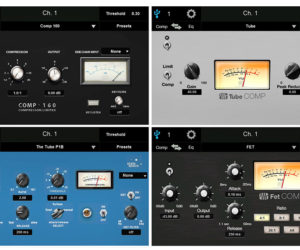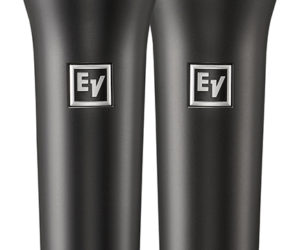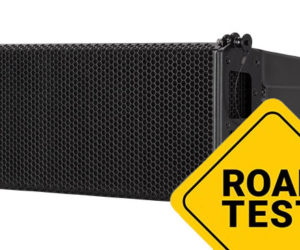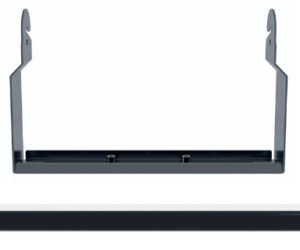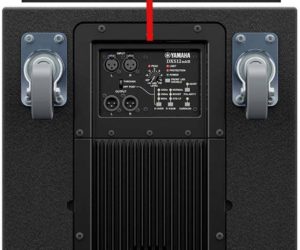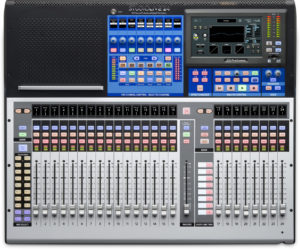Making The Rounds
After verifying that everything was in working order, it was time to take the sub out to a few gigs. The first stop was a corporate event where we needed to play music tracks and make announcements in a pre-function space (fancy corporate term for the lobby) before and after each main meeting session.
We’ve done this event for a few years now, and have found that the client likes to have a bit of extra bass in the music (which mostly consists of tracks of modern songs). The two K10.2s were placed on tripod stands in the corners of the coverage area, out of the way, with the subwoofer positioned at the center of one wall and camouflaged with few fake plants we found in the lobby.
There was more than enough bass for the gig without having to bring in a second sub, and the control of the cardioid pattern kept the rumble down, enabling the guests and bartenders to easily converse without raising their voices. This would not have been the case with a standard omnidirectional sub located at the same position.
Next up was a praise band at a church where a colleague serves as the sound tech. Once again, the K10.2 full-range boxes were on stands to the left and right to deliver stereo coverage, with the KS212C at the front/center of the stage, set on its side for a very low profile.
The portable stage hosting the performers was about two feet off the ground on legs, surrounded by a fabric skirt. My colleague advised me not to locate the sub in front of it due to the potential for bass spillage both on and under the stage (the latter of which could generate rumble). I replied that the sub was directional, which he took as a joke because it was just the single unit.

As we played a test track, the look on his face was priceless as he realized that I definitely wasn’t kidding about the cardioid pattern. His subsequent grin became contagious as members of his tech team and some of the musicians from the praise band who’d arrived early walked between the stage and coverage area, not quite believing that the bass was directional.
After the gig, we relocated the sub to a stage wing and played some more tracks to find out if the cardioid pattern would work as effectively with a hard wall surface just three feet behind it. To our ears, it most certainly did, and we further concurred that dual KS212Cs in a standard stereo configuration (one per side) would still effectively eliminate much of the bass spilling on to the stage.
More Than Enough
Our last application was support of a DJ at a hotel ballroom doing an annual gig featuring dinner and dancing for more than 300 people at the end of the week-long event. Normally he utilizes two small full-range boxes comparable to the K10.2s, joined by a pair of 18-inch front-loaded subs, to provide reinforcement.
My team and I thought the KS212C would perform as well, and likely better, than those two larger subs, and we were proved correct. We simply placed it on the floor in front of the dance floor, with the K10.2s on tripod stands left and right on stage at their lowest height settings to get the horns above the crowd. The built-in delay capabilities of the KS212C made it easy to align perfectly with the tops, which were several feet behind it.
As usual, we had the system completely set up when the DJ arrived a few hours before the gig. He took a look at the single sub and immediately noted that he didn’t think it was enough, so I asked him to play a track as soon as he set up his computer playback rig.
He chose a modern dance selection by Bruno Mars with a good amount of bass, and as I stood next to him at his station on stage, he shook his head and said there wasn’t enough low end. I asked him to reset the track and then follow me to the dance floor, where his jaw just about hit the ground.
He agreed definitively that there was more than enough bass on the dance floor, but did note later that during the gig, he felt a bit uncomfortable on stage behind the PA because he couldn’t “feel” the bottom end like he did with a “normal” PA. I agreed it was different, but from my perspective, as a PA provider it was markedly improved in terms of overall performance and especially having less random low-end noise bouncing around.
The KS212C is an excellent compact subwoofer that can easily scale with additional units for larger gigs. Its low-end signature is tight yet musical, with the cardioid design opening up a much wider range of placement options while significantly reducing stage bleed.
The package is small enough to be easily moved by a single person, and with the addition of a pole, it serves as a great starting point for a quality “speaker-over-sub” compact rig. Frankly, after this evaluation, I’m considering selling our smaller 18-inch front-loaded subs that we regularly deploy for small- to medium-size gigs and replacing them with KS212Cs.
U.S. MAP: $1,499.99



